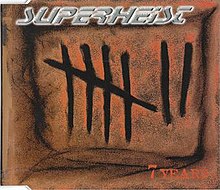콘스탄티 코르니악트
Konstanty Korniakt콘스탄티 코르니악트 | |
|---|---|
 기도 중인 코르니악트의 초상화 | |
| 태어난 | Konstantinos Korniaktos (Κωνσταντίνος Κορνιακτός) 1517 |
| 죽은 | 1603 |
| 로 알려져 있다 | 리비브에 [2]있는 코르니악트 궁전을 건설하는 데 자금을 대면서 |
| 배우자 | 안나 지두시카 |
| 아이들. | 아이 7명 |
Konstanty Korniakt (Greek: Κωνσταντίνος Κορνιακτός, Konstantinos Korniaktos;[a] c. 1517 – 1 August 1603) was a merchant of Greek descent,[3] active throughout Central and Eastern Europe; a leaseholder of royal tolls who collected customs duty on behalf of the king.그의 일생 동안 그는 리비브에서 가장 부유한 사람이었고 심지어 많은 [4]마을을 소유하기도 했다.그는 도매상인이었고 코르니악트 가문의 [1]창시자였다.
전기
그리스인인 [5][6][7]코르니아코스는 1517년 [8]크레타의 칸디아(오늘날의 헤라클리오)에서 태어났다.그는 1540년에 이미 부유한 상인이 된 어린 나이에 콘스탄티노폴리스로 이사했다.나중에 그는 몰다비아로 이사했고 그곳에서 여생을 살았다.1560년대 어느 시기에 코르니악트는 그의 [9][10]형 미카엘의 사업을 물려받은 르부프(현재의 우크라이나 리비브)에 정착했다.그 당시 리비브의 몰다비아는 이미 [11]왈라키아와 밀접하게 관련되어 있었다.지기스문트 2세 아우구스투스는 1571년 2월 12일 그에게 슐라크치 콘스탄티 코르니악트라는 공식적인 귀족 칭호를 부여했고, 다른 많은 특권들도 부여하여 크루치나의 [1]문장을 제정했다.크루치나[1]
콘스탄티 코르니악트는 특히 오스만 제국과 신성 로마 제국의 국제 무역을 다루었다.그는 상인이 되어 와인, 천, 면화, 꿀, 가죽, 모피 등을 거래했고, 곧 매우 부유해져서 지기스문트 2세 아우구스투스를 포함한 폴란드 왕들과 다른 귀족 [1]가문들에게 돈을 빌려주기도 했다.
투고
코르니악트는 건축의 후원자였고 시장 근처에 웅장한 집을 지었는데, 나중에 요한 3세 소비에스키에 의해 재건되었고 지금은 코르니악트 궁전으로 알려져 있다.그는 또한 왈라키아 교회를 확장했고 유명한 [13]탑에 자금을 지원했다.그는 동방 정교회의 열렬한 추종자였으며 다른 기독교 종파들과 우호적인 관계를 유지하며 동방 정교회의 이익을 옹호했다.
가족
1575년경 그는 루테니아의 귀족 여성[1] 안나 지두시카 H와 결혼했다.사스, 그리고 곧 아이를 가졌어요.그의 아들은 알렉산더, 콘스탄틴 (찰스 프란시스 대위의 아버지)와 미카엘 코르니악트이고, 그의 딸들은 카타르지나, 안나 ("그라투스" 타르노스키와 결혼), 소피아 (아브라함 휴버트와 결혼)와 캐서린 (알렉산데르 초드키에비치와 결혼), 그리고 그가 죽은 후 콘스탄티 벨츠 주지사가 되었다.
1603년 그가 죽은 직후, 그의 모든 자녀들은 가톨릭으로 개종했고 결국 폴론화 [1]되었다.그 후 그의 아들은 르부프에 있는 토지의 일부와 땅을 팔았고, 그의 형 알렉산드르 코르니악토는 떠나 프르제밀에 있는 부모로부터 물려받은 재산으로 이사했다.그는 소니차, 즈워토비체, 비아워보키 마을에 세 채의 주택을 소유하고 있었으며, 이 세 채는 가족을 위해 선택되었다.1610년에 성의 건설이 시작되었다.
주석
「 」를 참조해 주세요.
추가 정보
- 렘코, I. 리비브 역사에서 흥미로운 사실들. "아프리오리"Lviv 2011, 128쪽( ( ( (і ( ( ( ( ( ( ) 。: — — — : рі 2011 2011 2011 2011, 2011.- 128 с : і ) - ISBN978-617-629-024-7.
레퍼런스
- ^ a b c d e f g Krzysztof Bulzacki (2007–2012). "Rody Lwowskie – część I (Lwów noble families – part one): Konstanty Korniakt (1520–1603)". Alembekowie, Boimowie, Korniaktowie, Kampianie, Barączowie, Baczewscy (in Polish). Stanisław Kosiedowski – Mój Lwów. Retrieved 10 July 2013.
- ^ Adam Bujak; Jerzy Janicki (1997). Lwów. Wydawn. p. 17. ISBN 83-907436-1-2.
Korniaktowska Tower after its founder, a Cretan-born Greek named Korniakt, and classed by connoisseurs without a trace of exaggeration alongside the finest campanillas of Florence
- ^ Anna Benn; Hans Hoefer; Dorothy Stannard (1995). Russia: with chapters on Ukraine and Belarus. Apa Publications (HK) Ltd. pp. 306–307. ISBN 0-395-66167-6.
"Korniakt", was also built at the end of the 16th century for a well- known Greek merchant who used his influence to build a specially wide house
- ^ a b Isaievych, Iaroslav Dmytrovych (2006). Voluntary brotherhood: confraternities of laymen in early modern Ukraine. Canadian Institute of Ukrainian Studies Press. p. 47. ISBN 1-894865-03-0.
…the Greek merchants Constantine Korniakt and Manolis Arphanes Marinetos are added. This second redaction appeared no earlier than 1589, as wealthy Greeks began to join the confraternity at a later date, once it had expanded its activities. Korniakt was actually the wealthiest man in Lviv: he traded in Eastern, Western, and local goods, collected customs duty on behalf of the king, and owned a number of villages.
- ^ Malinowski, Jerzy (1993). Where East meets West: portrait of personages of the Polish–Lithuanian Commonwealth, 1576–1763 : exhibition catalogue. National Museum in Warsaw. p. 222. ISBN 83-7100-088-X.
Konstanty Korniakt Lwow merchant of Greek origin
- ^ Vasylʹ Mudryĭ, Naukove tovarystvo im. Shevchenka, Shevchenko Scientific Society (U.S.) (1962). Lviv: a symposium on its 700th anniversary. New York. p. 175. OCLC 3999247.
Foreign merchants who chose Lviv as their second home, repaid the city a hundredfold: the Greek from Crete, called Koreto de Candia, whose name was popularly abbreviated into Korniakt, was the most prominent Ukrainian patrician leader in Lviv in the late 16th and early 17th century, erected a beautiful bell-tower on the pattern of Renaissance campaniles attached to the church of Assumption.
{{cite book}}: CS1 maint: 여러 이름: 작성자 목록(링크) - ^ Beleckij Platon (1960). Le portrait dans la peinture ukrainienne (" Parsuna ") des XVII e et XVIII e siècles. Ecole des hautes études en sciences sociales. pp. 630–636. OCLC 295668339.
bienfaiteur de la Confrérie Constantin Korniaktos, Grec d'origine
- ^ École pratique des hautes études (France). Section des sciences économiques et sociales (1979). Cahiers du monde russe et soviétique, Volume 20. Mouton. p. 354. OCLC 185427756.
A famous case is Constantine Korniakt at the end of the sixteenth century who was a native of Crete, became a wine merchant in Lvov, was a leaseholder of royal tolls and finally achieved nobility.
- ^ 이사예비치, Ya.D.코스티안틴 코르니악트우크라이나 역사 백과사전.제5권우크라이나 역사 연구소'나우코바 덤카'키예프 2008
- ^ Kostiantyn Korniakt 리토피스 출판사
- ^ 기숙사 교회. 루테니아-왈라키아 리비브의 성지입니다.우크라이나 인코그니타
- ^ Adam Bujak; Jerzy Janicki (1997). Lwów Львів Leopolis. Wydawnictwo Bosz. p. 17. ISBN 83-907436-1-2.
Korniaktowska Tower after its founder, a Cretan-born Greek named Korniakt, and classed by connoisseurs without a trace of exaggeration alongside the finest campanillas of Florence.
- ^ Victor E. Louis; Jennifer M. Louis (1976). The complete guide to the Soviet Union. M. Joseph. p. 184. ISBN 0-7181-1077-3.
…built by Pietro di Barbona in 1574-80 for a Greek merchant, Constantine Korniakt. who financed the building of several churches in Lvov.
- ^ Panagiōtakēs, Nikolaos (1998). Anthē charitōn: meletēmata heortia sungraphenta. Istituto Ellenico di Studi Bizantini e Postbizantini di Venezia. p. 21. OCLC 301347251.
Κωνσταντίνο Κορνιακτό, ό όποιος τον είχε ...
- ^ Polska Akademia Umiejętności (1969). Polski słownik biograficzny, Volume 14. Instytut Historii PAN. p. 82. OCLC 309990360.
(Korniat, Korneadi, Korneades, Carneadi, Coretho, Carinacto) Konstanty h. Crucini (ok. 1520 — 1603)



